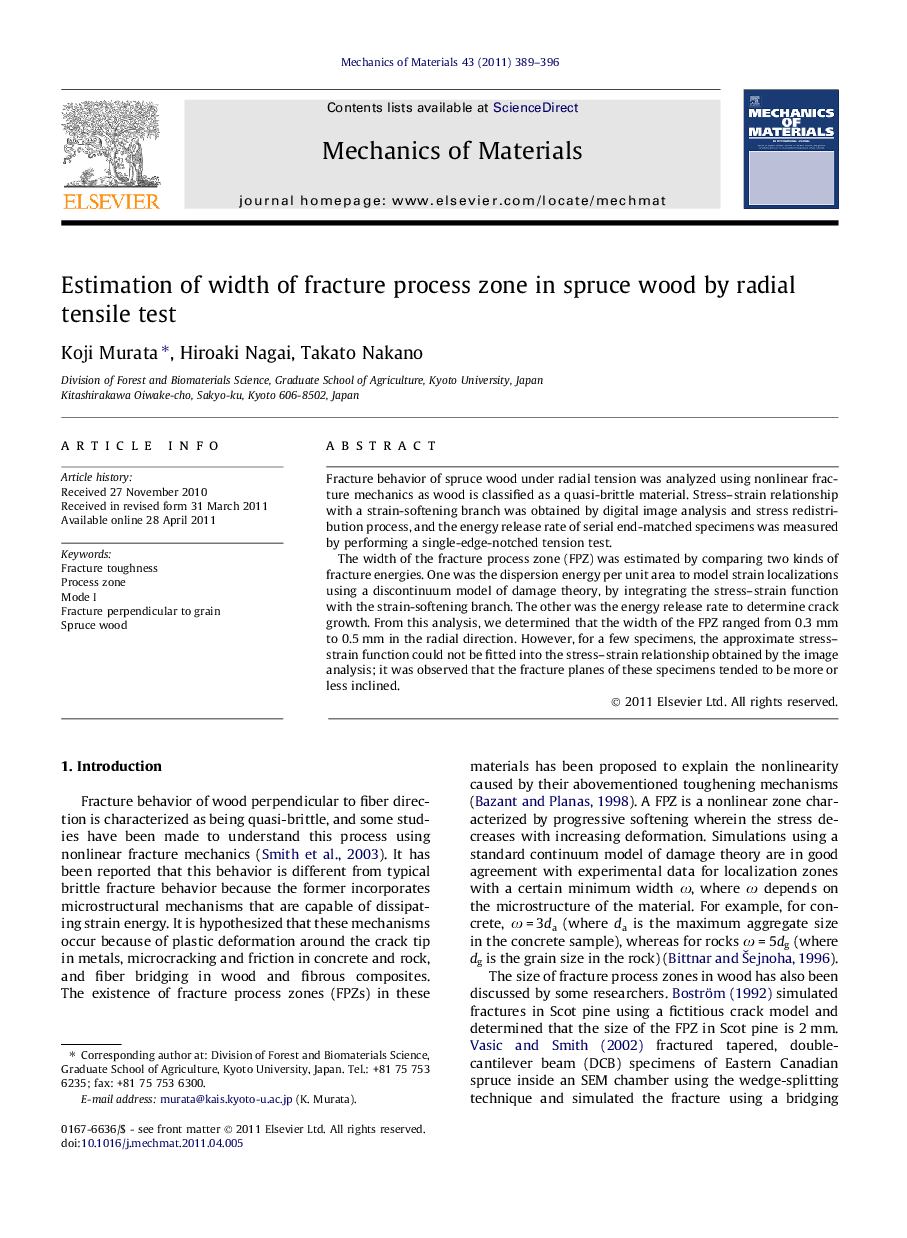| Article ID | Journal | Published Year | Pages | File Type |
|---|---|---|---|---|
| 800469 | Mechanics of Materials | 2011 | 8 Pages |
Fracture behavior of spruce wood under radial tension was analyzed using nonlinear fracture mechanics as wood is classified as a quasi-brittle material. Stress–strain relationship with a strain-softening branch was obtained by digital image analysis and stress redistribution process, and the energy release rate of serial end-matched specimens was measured by performing a single-edge-notched tension test.The width of the fracture process zone (FPZ) was estimated by comparing two kinds of fracture energies. One was the dispersion energy per unit area to model strain localizations using a discontinuum model of damage theory, by integrating the stress–strain function with the strain-softening branch. The other was the energy release rate to determine crack growth. From this analysis, we determined that the width of the FPZ ranged from 0.3 mm to 0.5 mm in the radial direction. However, for a few specimens, the approximate stress–strain function could not be fitted into the stress–strain relationship obtained by the image analysis; it was observed that the fracture planes of these specimens tended to be more or less inclined.
► We estimate size of fracture process zone in wood specimen through a new approach. ► We complete this work using two fracture energies. ► The two energies are well-known energy release rate and the actual fracture energy. ► The actual energy is estimated by integrating actual stress–strain relationship. ► We determined that the width ranged from 0.3 mm to 0.5 mm in the radial direction.
